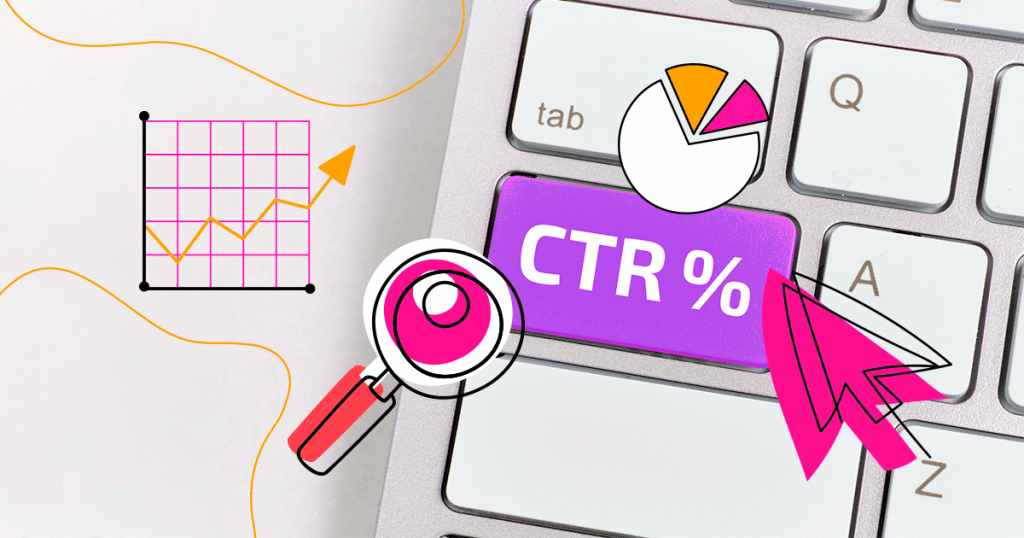Opening the Secrets of CTR Manipulation for Better ROI
The control of click-through rates (CTR) provides an engaging chance for marketers seeking to enhance roi (ROI) By comprehending the nuances of CTR and its essential duty in driving engagement, professionals can employ different methods to enhance material effectively. From A/B screening to information evaluation, the strategies for boosting CTR vary and impactful. The real prospective lies in discovering the underlying habits that drive these metrics. What particular tactics can be utilized to unlock this prospective and eventually transform campaign results?
Understanding Click-Through Rate
In electronic advertising, recognizing Click-Through Rate (CTR) is vital for reviewing the effectiveness of online projects. CTR is a key performance metric that measures the percent of users that click on a particular web link contrasted to the total number of individuals who check out the content. GMB CTR Manipulation. It is determined by splitting the variety of clicks by the number of impressions, then multiplying by 100 to reveal it as a percent
A greater CTR shows that the content is engaging and appropriate to the audience, while a lower CTR might suggest that the content is not reverberating or that the call to activity is inadequate. CTR serves as an indicator of the innovative components in advertising, including headlines, images, and overall messaging.
Understanding CTR additionally helps in determining trends in time, allowing marketing professionals to fine-tune their techniques based on performance data. By analyzing CTR throughout various networks-- such as email campaigns, social media sites advertisements, and online search engine results-- marketing experts can get insights right into target market habits and choices. Eventually, CTR is a foundational metric that can notify decisions to optimize campaign performance and enhance general roi (ROI)
Relevance of CTR in Advertising
Exactly how can marketing experts leverage Click-Through Rate (CTR) to improve their campaign performance? CTR is a critical metric that quantifies the percentage of users that click on a promotion or web link compared to the overall number of customers that see it. A high CTR suggests that a campaign resonates well with its target market, efficiently capturing their rate of interest and encouraging activity.
Recognizing the value of CTR permits marketing experts to assess the relevance and allure of their messaging, innovative assets, and general strategy. Evaluating CTR not just gives insights right into individual engagement however also aids in recognizing areas for improvement. Marketing experts can use CTR data to improve their targeting, guaranteeing that promotions get to the most appropriate target market sectors.
Furthermore, CTR influences the high quality rating in pay-per-click (PAY PER CLICK) advertising and marketing, impacting advertisement positioning and cost performance. A well-optimized CTR can lead to decrease prices per click and enhanced return on investment (ROI) Eventually, monitoring and boosting CTR is indispensable for marketing experts looking for to maximize their project performance and achieve lasting development in a competitive look at this now landscape. By prioritizing this metric, business can make data-driven decisions that improve their overall advertising approach.
Techniques for CTR Optimization

Another effective approach is A/B testing, where variations of advertisement duplicates, pictures, or calls-to-action are evaluated to determine which variations generate higher CTRs. This data-driven strategy allows businesses to refine their messaging based on genuine consumer actions.
Utilizing attractive visuals can additionally improve CTR, as appealing graphics or video clips have a tendency to attract customers' focus better than message alone (GMB CTR Manipulation). In addition, employing urgency or deficiency tactics-- such as limited-time deals-- can produce a sense of need, compelling users to act immediately
Moreover, optimizing touchdown web pages for mobile devices is critical, as an increasing variety of users accessibility material via mobile phones. A seamless individual experience cultivates engagement and encourages clicks. Leveraging social evidence, such as reviews and testimonials, can build depend on and boost the chance of clicks, eventually driving far better ROI.
Analyzing CTR Information
Recognizing CTR information is necessary for marketers intending to boost their projects and make the most of my link return on financial investment. Analyzing this data includes inspecting click-through prices throughout numerous channels, ad layouts, and target demographics. By segmenting CTR data, marketing experts can recognize which elements resonate with target markets and which need optimization.
A comprehensive examination of CTR fads gradually can disclose patterns that educate future approaches. Seasonal variants may affect interaction, suggesting the demand for customized messaging throughout optimal durations. Furthermore, contrasting CTR information versus market criteria can help assess campaign efficiency, assisting adjustments to improve performance.
Marketers should also think about factors affecting CTR, such as advertisement placement, duplicate, and visual aspects. A/B testing various variations enables a much deeper understanding of what drives clicks. Additionally, integrating CTR information with individual behavior analytics provides insights into the total consumer journey, highlighting possibilities for additional optimization.
Determining ROI Impact
Determining the effect of click-through rates on roi (ROI) is essential for marketing professionals wanting to confirm their approaches. By quantifying the partnership between CTR and ROI, businesses can determine which projects efficiently drive income and enhance their advertising initiatives accordingly.
To start this assessment, one need to develop a this contact form clear baseline for ROI, normally calculated as the internet revenue separated by the overall financial investment. Once the baseline is established, marketing teams can examine CTR metrics from different projects, noting just how modifications in CTR influence overall sales and income generation.
Advanced analytics tools can even more boost this procedure by segmenting information across different channels, target market demographics, and project kinds. This granularity allows marketing professionals to pinpoint specific aspects that either positively or adversely effect ROI.
Furthermore, it is vital to think about the lag effect, where boosted CTR could not right away translate into greater sales. Tracking efficiency in time can offer understandings into longer-term influence on ROI.
Eventually, an extensive understanding of just how CTR manipulation modifies ROI encourages marketing experts to refine their methods, ensuring optimal allotment of sources and taken full advantage of monetary returns.
Verdict
